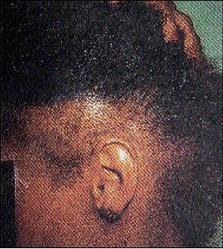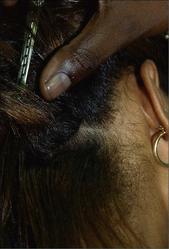Response to reader
Dear Ms McDaniel,
I read your article about alopecia (hair loss) in the June 4, issue. I found it very interesting and informative. I thought that maybe I could get some more advice on the reasons why women experience hair loss, especially on the sides of the head and back.
Over the last five years, I have been battering with excessive hair loss. The back and sides are bald, the middle is very long and I noticed, recently, that the thinning has been moving further inwards and I can almost see myself losing all my hair. I have tried treating my hair and I am very distressed. I need a recommendation on how to get my hair growing again.
Dear Reader,
Thanks for your letter. You did not reveal which tablets you took or what your 'hair specialists' felt was the cause of your challenge. I am assuming that your hair specialists are hairstylists, and that you have not been given a medical diagnosis, or prescription medication, by a skin specialist (dermatologist).
One of the reasons for women experiencing alopecia (excessive hair loss), traction, was covered in my article which you read. Women sometimes wear styles such as ponytails, corn-rows and weaves, which constantly pull at the hair shaft and cause tension and eventual damage to the hair follicle. Hair loss is usually at the front and sides of the head.
Other styles, which involve excessive heat, hair glues and chemicals, are the usual suspects in damaging the keratin (hair protein), making the hair weak and prone to falling out. At the first sign of hair loss, some women do exactly as you did to 'solve' the problem - weave the hair. In many cases, this just causes more hair loss from the hair line.
Thyroid gland disorders, iron deficiency and just old age (alopecia of senescence) must be considered in alopecia. Medications such as allopurinol, warfarin and gemfibrozil have the possible side effect of alopecia.
Androgenetic Alopecia (AGA)
Other reasons for women's hair loss includes changes in male hormones, especially a hormone derivative called DHT (di-hydro-testosterone). This imbalance may lead to a condition called pattern baldness (androgenetic alopecia) since DHT shrinks the hair follicles. Of course, women have tiny amounts of this DHT hormone under normal conditions but, in many cases, there is a genetic reason for this imbalance, which is inherited from parents.
Other conditions which are linked to the level and action of hormones may trigger AGA. Ovarian problems, menopause, and taking oral contraceptives with relatively high androgen (male hormone) content are other possible culprits in AGA. The contraceptive injection, implant, patch and vaginal ring may cause alopecia. Typically, the woman with AGA usually experiences thinning of hair in the crown of the head, which is the opposite of your experience (your crown is where you have the most hair).
Stress and Shedding
Telogen effluvium (TE) is a condition in which most of the hair goes into a shedding phase (telogen). This may occur up to three months after stressful events, including major surgery, childbirth, severe infection and also when the body is not properly nourished. This TE problem can persist for years but may be reversed by avoiding these stressful events.
Chemotherapy
For the benefit of other readers, anagen effluvium (AE) is another cause of hair loss, usually associated with exposure to chemotherapy. Hair follicles which are in the growing phase (anagen) are damaged by chemotherapy.
Treatment
The first rule to treating alopecia is getting the correct diagnosis. Identifying the cause of your hair loss which, very likely, is an underlying physical problem, is best done by a skin specialist. Blood tests for iron, hormones, including thyroid hormones, may be requested.
Hair-pull tests may also be done to see the extent of hair loss. The earlier you receive treatment, the better. For AGA, your doctor may prescribe minoxidil solution (Rogaine) which is applied directly to the scalp, and may produce results within four months. It is useful for people who have been losing hair for less than five years. You would have to use it indefinitely, since hair loss may recur once you stop using the product.
Oral contraceptives, with relatively low androgen content may be prescribed. These decrease the production of the androgen. Cyproterone with ethyny-estradiol (Diane-35) is another pill with similar effect. Finally, wigs are in, if you are so inclined.
Dahlia McDaniel is a pharmacist and final year doctoral candidate in public health at the University of London; email: yourhealth@gleanerjm.com.


Left: Traction Alopecia is caused when too much tension is placed on the hair, breaking it from the root, causing baldness. Right: The first rule to treating alopecia is getting the correct diagnosis. Identifying the cause of your hair loss which, very likely, is an underlying physical problem, is best done by a skin specialist. Blood tests for iron, hormones, including thyroid hormones, may be requested. - photos by Winston Sil/Freelance Photographer

